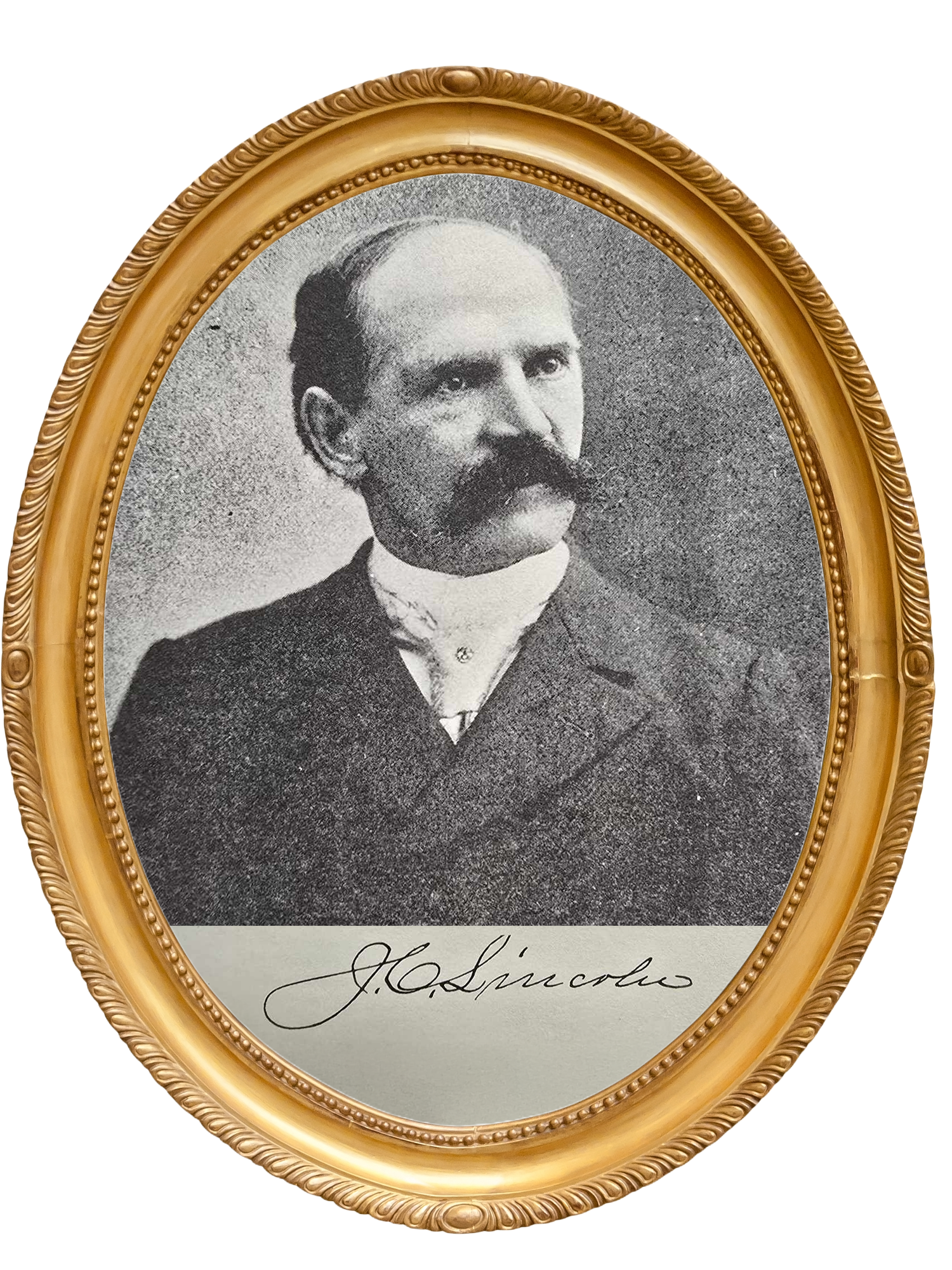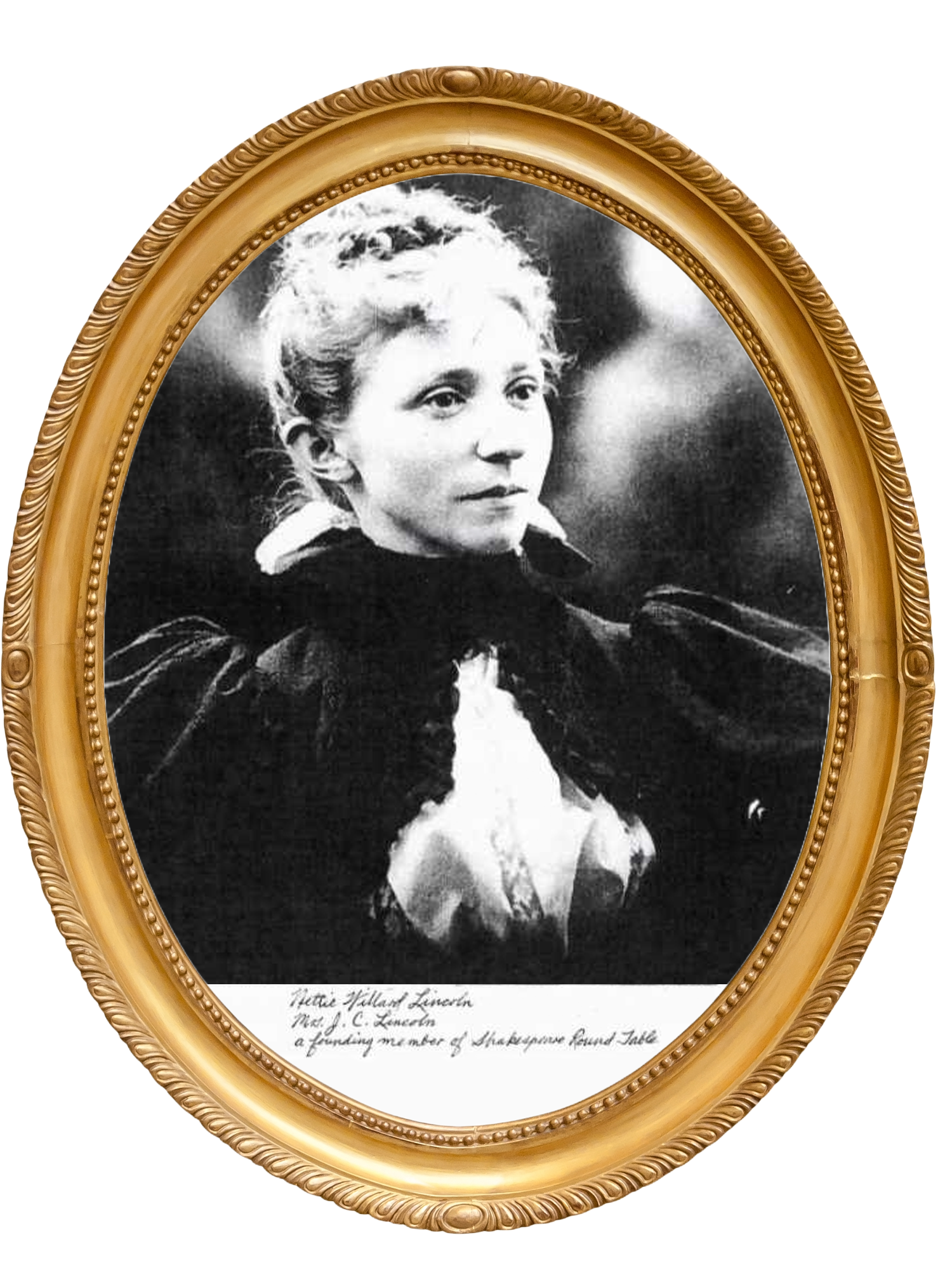
History
– Embracing The Past –

“History doesn’t repeat itself, but it often rhymes.”- Mark Twain noted in the introduction of his novel with Charles Dudley, “The Gilded Age,” published in 1873. The quote suggests that while events may not occur identically, they can exhibit similar patterns and lessons over time. The “rhyming” implies that similar human tendencies and societal structures can resurface in different contexts, offering valuable insights into human behavior and history. So with that insight we move forward in the Lincoln House to discover the past lives of those who lived there while carrying on “rhymes” to the current times of hospitality, encouragement, change and values that were once the social norms of those in the past. Let us see how we got here, shall we?
Bowling Green, OH
Bowling Green (population as of 1/02/2025 30,384) had its beginnings in 1833, when pioneer Elisha Martindale claimed 40 acres of land in northwest Ohio’s Great Black Swamp. A year later, a regional postal carrier named this newly settled area Bowling Green after his hometown in Kentucky. The community experienced pronounced growth after large quantities of natural gas were struck locally in 1884. Free gas attracted five glass-making companies, which brought about the town’s temporary moniker “Crystal City.”
Bowling Green became a city in 1901. It soon became an education center, with the establishment of State Normal College (now called Bowling Green State University) in 1910. The oil and gas boom dried up in the early 1900’s and Bowling Green returned to its agricultural roots. Very few buildings of importance were built after 1910 in what is now known as the Historic Downtown. “The Four Corners” refers to the original central intersection of Wooster and Main Street. Although many of the structures in the historical district are still with us there were two devastating fires during the “boom years”. One in August 1887 that claimed over a quarter of the wooden buildings in the town’s central business district. The other fire happened on the East side of North Main Street on Halloween in 1888 where the Sentinel Block, Emerine & McCauley’s hotel and livery, F.N. Griffith’s Store, an Opera house and others were destroyed. Today, Bowling Green is a thriving community whose past is reflected in a vibrant, carefully preserved downtown. This university city boasts a manufacturing-based economy, as well as a firm dedication to the arts and preserving the local history.
The Lincolns
Dr. J.C. Lincoln and Miss Nettie Willard were married in Hamilton, Ohio on the 11th day of June in 1885. They built their elegant home at 325 North Main Street in 1895. This dynamic couple thrived in the Bowling Green community. Both achieved extraordinary feats in building the Bowling Green, Ohio, we know today.
Mr. Lincoln
Dr. J.C. Lincoln was born May 22, 1844 in Albany NY to parents Leonard Lincoln and Miss Ada Bougnton. He was the youngest of two boys. The oldest son being Charles Lincoln. Both of his parents were natives of Albany and were descendants of some of the original settlers in New York. After his Mother’s passing in 1852 his family relocated to Winona, Minnesota. His older brother was a soldier in the first ferocious battle of Bull Run. During this time he was repeatedly captured after 3 attempts to escape. He subsequently died a few years later due to complications of wounds and malnutrition caused during his time as a prisoner of war. Shortly after Charles joined the war his younger brother Joseph aided in the war effort by recruiting 347 men for his brothers regiment, the First Minnesota, and joined them at Camp Stone as an assistant surgeon. A year later J.C. was wounded at The Fair Oaks battle. He would forever be compromised from this wound, but his experience gained during his time in the Civil War led him to seek a career in medicine. He Graduated in 1871 at the age of 27 from Rush Medical in Chicago with his M.D. He soon moved outside of Fostoria Ohio to practice medicine where he met and married his first wife Miss Emma Noriss (aged 19) of Fostoria in 1873. That same year they relocated to Bowling Green Ohio and had two children, John H. Lincoln who would grow up to be an exceptional contributor to Bowling Greens Wood County Savings Bank and his community. Their daughter, Eudora Lincoln (known as Dora), who grew up to marry George giving birth to a daughter before her early passing in 1907.
Lincoln’s children would lose their mother, Emma, just weeks before the Christmas of 1883 after battling what was most likely tuberculosis. Dr. J.C. Lincoln then married Miss. Nettie Willard of Memphis, Tennessee in 1885. During their union, Dr. J.C. Lincoln became one of the most valued and highly respected citizens in Bowling Green. Establishing his practice on the corner of Main Street and Wooster (now known as the four corners). In a two story brick building bearing the name Lincoln (still standing today) subsequently giving a nickname to the area of “The Lincoln and Tuller (his partner) Block”. Dr. J.C. Lincoln continued his service to the community by joining local organizations and boards. He was nominated as the first secretary of The Wood County Medical Society when it was first organized March 7, 1877. He was an active Republican who served as councilman and member of the board of education. He later was appointed medical pension examiner by President Benjamin Harrison and in 1896 had the backing of Wood County for the Republican nomination for congressman. Dr. J.C. Lincoln was one of the original members who built Bowling Green’s Wood County Savings Bank, the same bank that his son John would serve till his death in 1942. Dr. J.C. Lincoln died in his home March 24, 1926 after being bedridden for the previous year after a fall that broke his hip. He was laid to rest in the picturesque Oak Grove cemetery off of Ridge Street in Bowling Green Ohio.


Nettie Lincoln
Miss. Nettie Willard was born in Memphis, Tennessee to Charles and Elizabeth Willard on October 21, 1863. Nettie came to Bowling Green at just 20 years old in 1883 for the opportunity to teach. Nettie Willard married Dr. J.C. Lincoln in 1885 when she was 22 years old. After becoming a wife she could no longer teach due to the social standards at the time. Mrs. Nettie Lincoln found herself at a young age with two young children and the new socialite of her married friends, especially after the Lincoln house was built. The large home lent itself to hosting and was often filled daily with other prominent women in the community. Mrs. Lincoln took to her new role with determination and grace even after Dr. Lincoln’s daughter Dora passed away. Nettie took in her granddaughter, Helen L. Harvey, to raise. While her husband created his presence in town Nettie took her newly found influence and made the most of it. By 1906 Mrs. Lincoln was among a group of distinguished ladies who established the Shakespeare Round Table ( the longest standing women’s group in Bowling Green who still meet to this day). The intention of the gatherings was to discuss the writings of famous and familiar books. However, their passion for literature soon became a mission to open the first free public library for Wood County citizens. The library was housed in over five different locations, growing with each move until the current location was erected in 1965.
Mrs. Lincoln was known for her easy going temperament and her overall interest in the person she was speaking to which made talking over tea very easy. As the demand of raising small children subsided Mrs. Lincoln found time to do things that she loved. She would often be seen walking her many dogs down Main street. She posted many classifieds in The Daily Sentinel-Tribune through the years of 1911-1926 seeking students to learn various skills such as painting using different mediums like watercolor, oils and even painting on china. Mrs. Lincoln was also fluent in French and would offer classes to individuals interested in the romantic language. During this time Mrs. Lincoln would spend most of her winters at The Laguna Beach Art Colony that opened in 1918. There she mastered the style of plein air painting. The various seascapes she painted would have been loose applications of oil paints focusing on shapes and colors based off of the light of a sunrise or sunset. Mrs. Lincoln gifted three of her best paintings to three various organizations in her estate. As luck and determination would have it, one of our founders was able to locate one of the three paintings and now thanks to the Presbyterian Ladies group’s generous donation it now hangs inside The Lincoln House once again.
Mrs. Lincoln lost her husband in 1926. Afterwards she spent much of her time enjoying friends and giving back to the community. Her home was notably described as a center of hospitality. Mrs. Lincoln even housed a few promising young ladies while they attended BGSU before marriage. She continued being an active board member of the Wood County Library. She was a member of the Society of Women Artists in Toledo where her works were put on exhibit many times. One of her favorite hobbies was attending theater. She had such an extensive collection of brochures, pamphlets, photos and journaling about her experiences that the collection is available to the public to admire at the Center for Archival Collections at BGSU campus.
Mrs. Nettie Lincoln suffered a cerebral hemorrhage at the age of 84 which left her hospitalized for nearly six weeks in the Community Hospital (A two story brick building still standing today and recognized as the oldest building on that block of West Main Street). Mrs. Lincoln was able to return to her home for a few more weeks before falling ill again and eventually passing away at the Community Hospital on Saturday November 29, 1947. She now lays next to her husband and his first wife at the Oak Grove Cemetery.
Nettie and Joseph Lincoln continue to be one of Bowling Green’s most prominent historic families. For close to 70 years they worked on issues and growth in this beautiful community.
Sigma Psi Omega
On November 1, 1948, after the purchase of The Lincoln House Warren Ransler, Ralph Hose, Doyle McOwen, and David Hastatler formed Sigma Psi Omega, the local fraternity. Two years later to the day, it was announced that the local fraternity would become the Ohio Kappa chapter of the national fraternity, Sigma Phi Epsilon. For more than 60 years since, the men of Ohio Kappa have been leaders, socially, athletically, and within campus organizations across BGSU. It was said by a previous fraternity member who lived in the home during that time that he believed there to be upwards of forty other members living in the house. That time however was cut short. Two years after purchasing The Lincoln House the fraternity was moved onto campus becoming the fifteenth national fraternity represented at Bowling Green State University as of 1950.
The Sterns
Ivan was born in Weston, Ohio, to the late Elmer and Esther (Kidd) Stearns. He married Joyce Businger on October 22, 1950 in the Trinity United Methodist Church. Ivan graduated in 1944 from Liberty High School and would later proudly serve his country in the US Army where he was decorated with the Asiatic Pacific Theater Ribbon, Victory Medal, Good Conduct Medal and the Meritorious Unit Award Medal. He graduated from BGSU, attended the University of Michigan and later graduating with his Masters’ of Science in 1954 from the University of Illinois. His career in teaching began with the Fisher, Illinois Schools in 1955; North Baltimore, Ohio Schools in 1958 and later Bowling Green City Schools in 1963 and retiring in 1992. He was an active member of the Trinity United Methodist Church where he served as a Trustee on their Board and also enjoyed singing in the choir. He was a member of the Tontogany Post of the American Legion; Alpha Epsilon Delta national premed honor society; Life member of International Order of King’s Daughters & Sons, and the Wood County Genealogy. He also enjoyed attending and participating in many of the National Science Summer Institutes held in Aspen, Colorado; Brookings, South Dakota; Springfield, Ohio; and Case Western in Cleveland, Ohio.
Joyce C. Stearns, 92, of Elmore, Ohio and formerly of Bowling Green, Ohio, passed away on May 3, 2022, at Bay Park Community Hospital, Oregon, Ohio. Joyce was born in Weston, Ohio on March 26, 1930, the daughter of Jacob A. and Laura H. (Wilhelm) Businger. She married Ivan Stearns at the Trinity United Methodist Church in Bowling Green, Ohio on October 22, 1950. He preceded her in death on July 8, 2009. Joyce was a homemaker who was dedicated to her own family and her family at Trinity United Methodist Church in Bowling Green, where she was a member for over 60 years. She dedicated her time to helping others through her church, Martha’s Kitchen Food Pantry, and many other service organizations in the area. She was a member of the King’s Daughters and Sons Group and the church Dart ball team. Joyce also looked forward to baking, especially anything sweet, reading a wide range of books, working on puzzles, and doting over her beloved cats, “Glory,” “Big Boy,” and “Lady”.
Get in Touch
– Contact Us –
Email: thelincolnhouseinn@gmail.com
Address: 325 N Main St, Bowling Green, OH 43402